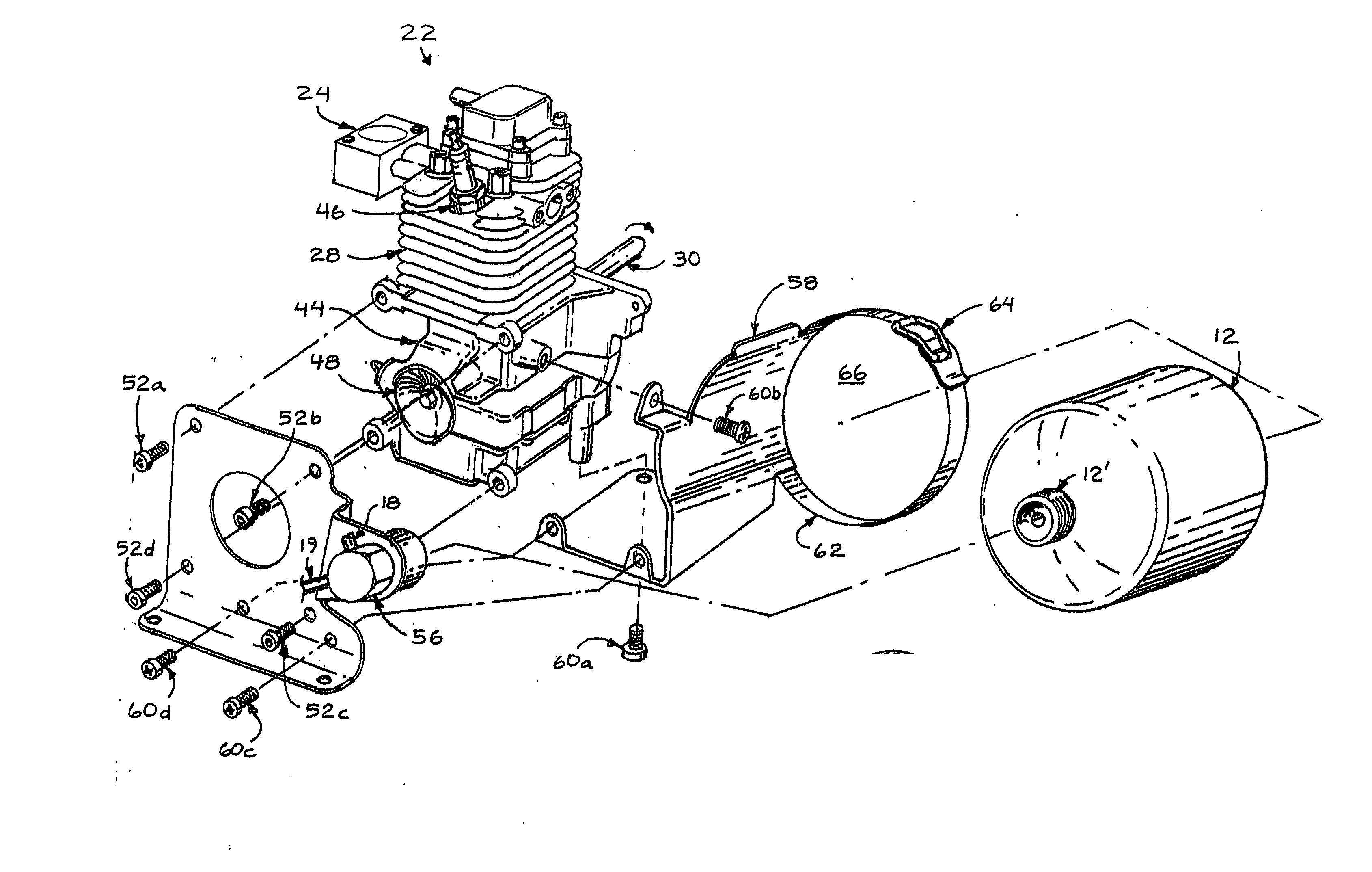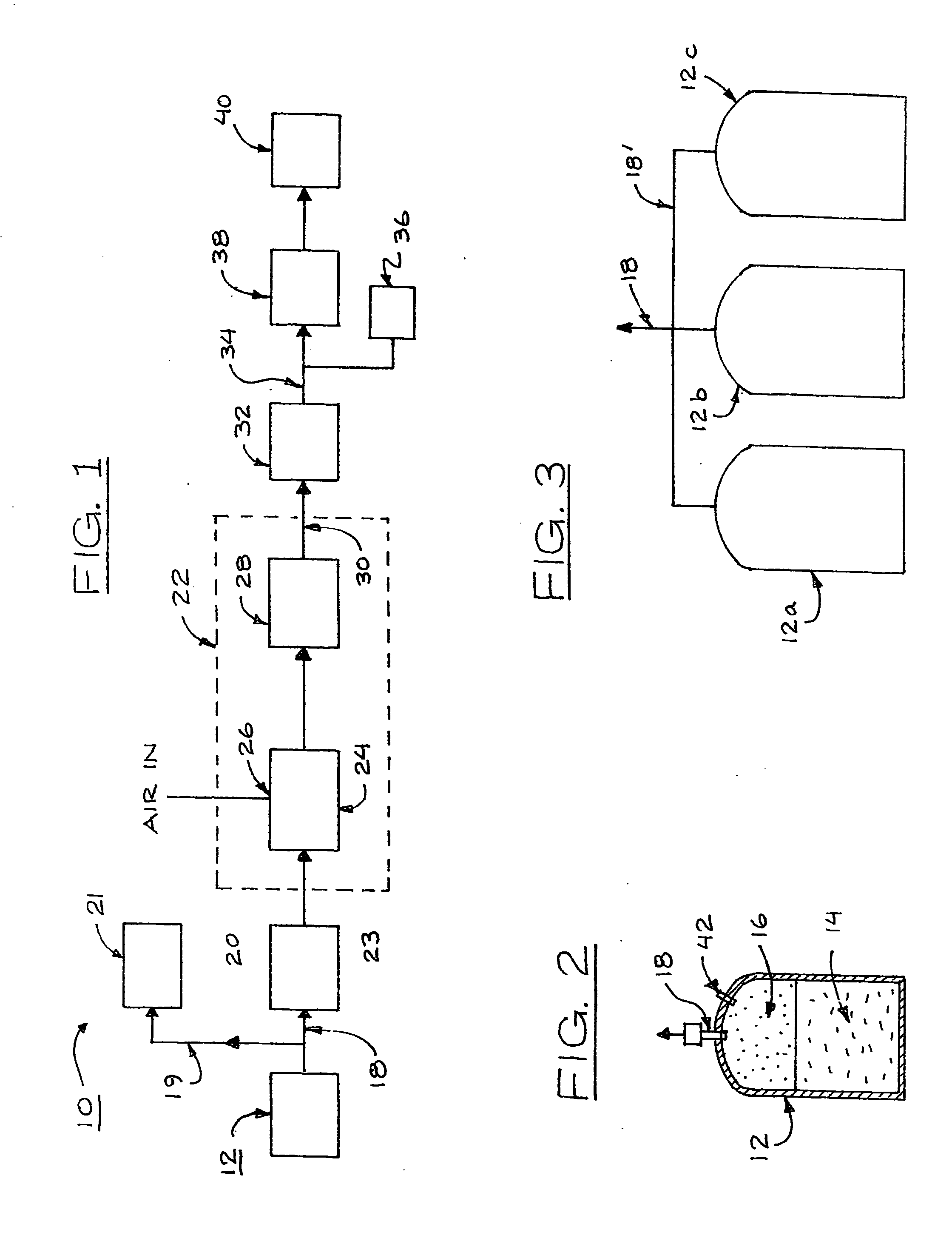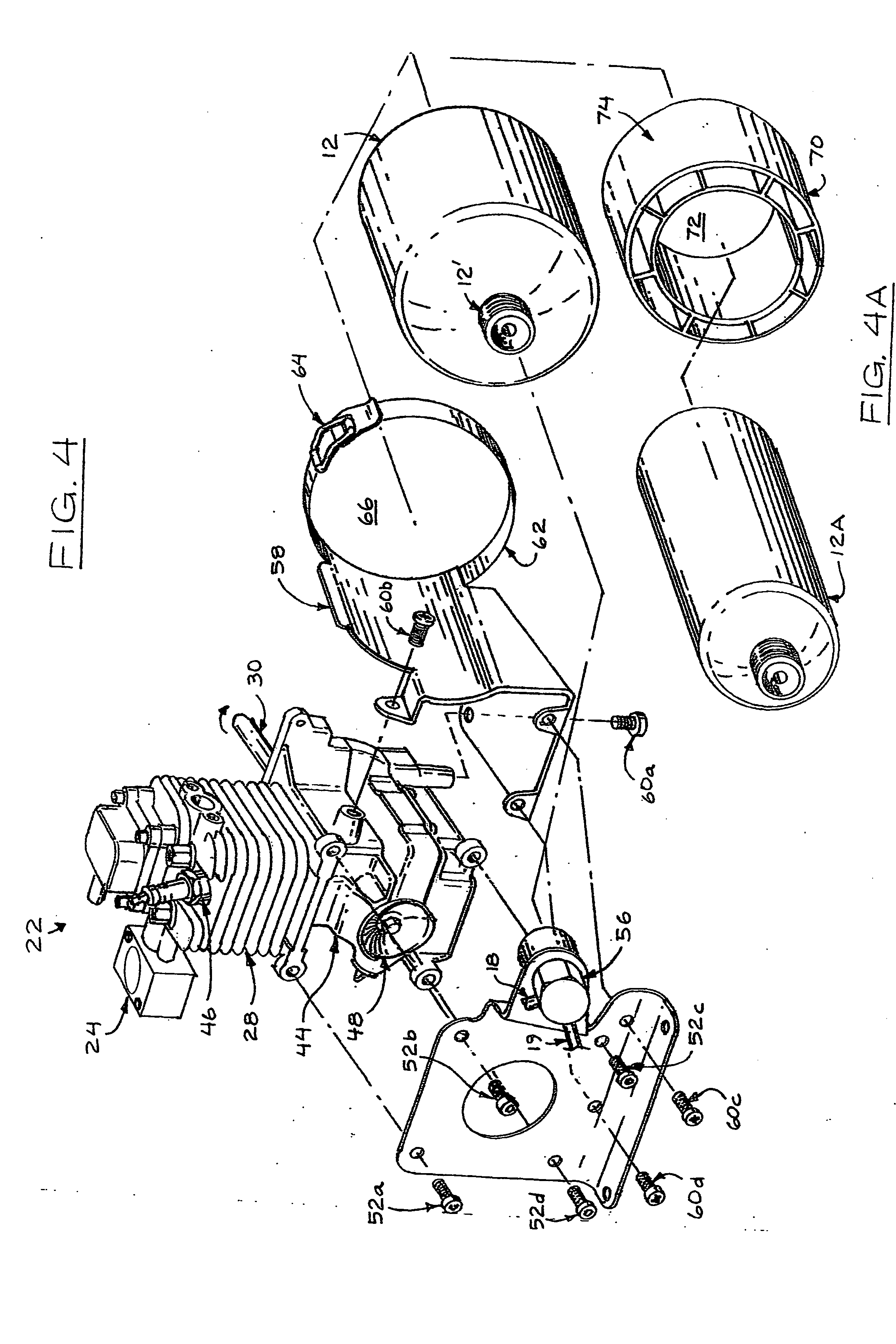Portable gas powered internal combustion engine arrangement
a gas-powered internal combustion engine and portability technology, which is applied to engines, machines/engines, mechanical equipment, etc., can solve the problems of limited utility of such a device, large and cumbersome devices, and inability to adapt, so as to maximize the gas flow, prevent the flow of liquid lpg, and maximize the surface area of lpg
- Summary
- Abstract
- Description
- Claims
- Application Information
AI Technical Summary
Benefits of technology
Problems solved by technology
Method used
Image
Examples
embodiment 10
[0044]The gas 16 flowing from the pressure regulator 20 is directed through a conduit 23 into a carburetor 24 that is part of the internal combustion engine 22. The carburetor 24 has an air intake as indicated at 26. The carburetor 24 mixes the gas 16 with the air and provides the mixture to the cylinder 28 of the internal combustion engine 22 in a manner well known. The internal combustion engine 22 has a rotating output shaft 30. In the embodiment 10 the rotating output shaft drives an electric generator 32. The electric generator 32 provides electric energy as indicated at 34 and may be, for example in the power range of 300 to 1000 watts though larger power generators may be utilized in other applications. The electric energy may, if desired, be directed to provide 12 volt DC current as indicted at 36 or may be passed into an invertor 38 for conversion to 120 volts AC, 60 cycle as indicted at 40.
[0045]As noted above, the internal combustion engine 22 may be a four stroke, or two...
embodiment 100
[0054]FIG. 10 illustrates an embodiment 100 of the present invention as utilized to power an trimmer 102. As shown on FIG. 10, there is provided an internal combustion engine 22 powered by gas from an LPG container 12 and the internal combustion engine 22 rotates an output shaft 30′ to rotate the trimmer. Thus, the internal combustion engine and LPG container replace the gasoline powered engine and gasoline tank often utilized in such applications.
[0055]FIG. 11 illustrates an embodiment 110 of the present invention in which an internal combustion engine 22 powered by the gas from an LPG container 12 drives a fan 112 to provide a leaf blower 114. In embodiment 110 the internal combustion engine 22 and LPG bottle 12 replace the gasoline powered internal combustion engine and gasoline storage tank often utilized in such applications.
[0056]As described above, there is provided by the present invention a convenient and safe internal combustion engine driven by the gas generated from the ...
PUM
 Login to View More
Login to View More Abstract
Description
Claims
Application Information
 Login to View More
Login to View More - Generate Ideas
- Intellectual Property
- Life Sciences
- Materials
- Tech Scout
- Unparalleled Data Quality
- Higher Quality Content
- 60% Fewer Hallucinations
Browse by: Latest US Patents, China's latest patents, Technical Efficacy Thesaurus, Application Domain, Technology Topic, Popular Technical Reports.
© 2025 PatSnap. All rights reserved.Legal|Privacy policy|Modern Slavery Act Transparency Statement|Sitemap|About US| Contact US: help@patsnap.com



